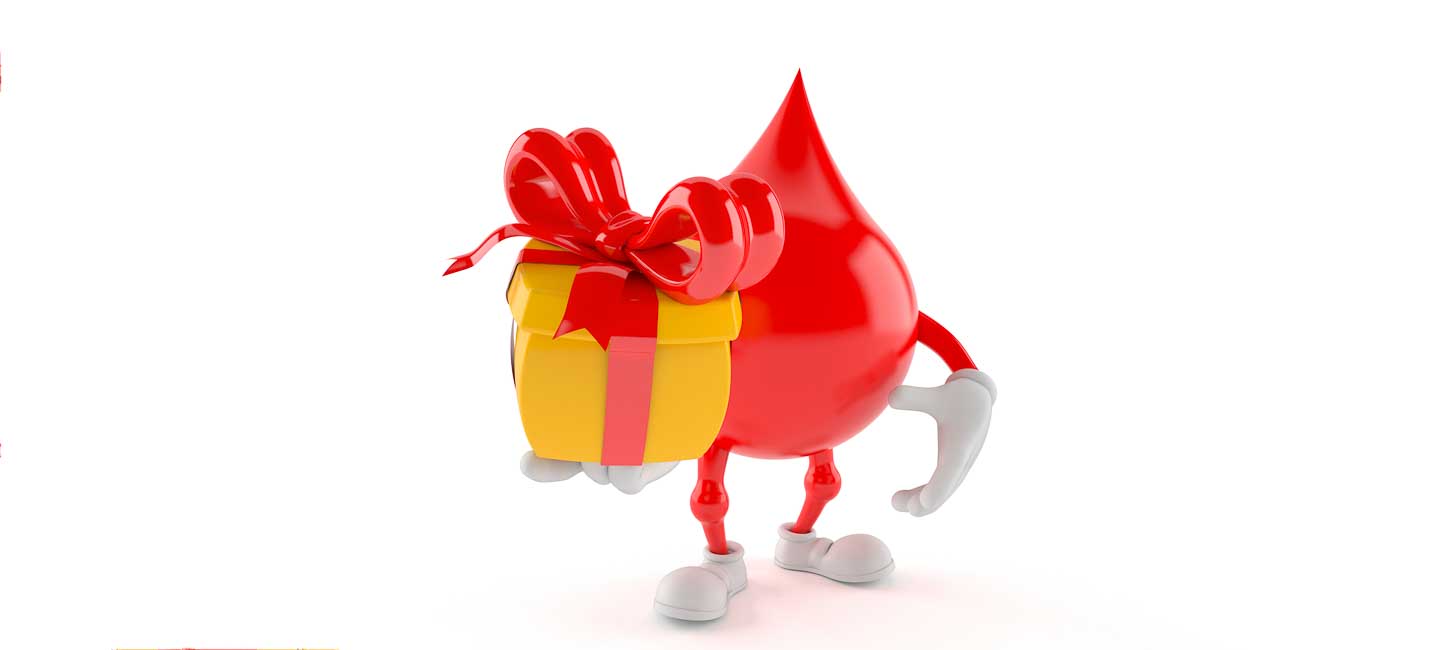Give that One Last Gift this Holiday. Donate blood
It’s the season of giving and many people look for charitable ways to spread that holiday cheer. This year, why not literally think outside of the box and donate blood?
According to Dr. Kaaron Benson, medical director of Moffitt Cancer Center’s blood bank, blood supplies run low every January because the schedules of regular donors become disrupted over the holidays.
“During the first two weeks of the new year, we often see a nationwide blood shortage,” Benson said. “The holiday season is a time when donors don’t always show up because they are traveling or battling a winter cold. Now is one of the best times to consider a blood donation for our community’s patients in need.”
Benson has donated 18 gallons of blood since her teen years and encourages friends and family members of patients to consider donating in honor of their loved ones battling cancer.
“Donated blood replenishes the community supply, which can run dangerously low this time of year,” Benson said. “It’s a way to actively do something when you want to help someone in the midst of their cancer journey.”
Opportunities to donate are everywhere, and the process of giving and receiving blood is incredibly safe.
“Technology, experience and the wealth of knowledge we’ve gained over the last few decades have made blood donation and blood transfusions safer than ever before,” Benson said. “New, sterile, disposable equipment is used for each donor so there’s no risk of contracting bloodborne infections through donations. Plus, your body replaces those lost red blood cells after a few weeks.”
The risks to those receiving blood is also very low, thanks to advanced screening processes. The biggest risk to those receiving blood is an allergic reaction that can occur in about 1 percent of transfusions. It is typically quite mild and readily cured with an antihistamine medication. Fortunately, the infectious risks are exceedingly low.
While many donors may have one patient in mind while they are donating, they may not realize that their single unit of donated blood can benefit more than one patient. A single unit of blood can benefit several patients by separating it into its various components, like the red blood cells, platelets and plasma. Those individual components can be delivered to patients who are in need of that specific component.
Globally, the World Health Organization estimates that 112.5 million blood donations are collected each year.
A majority of blood donors have no idea where their donation will be used or whose life it will save. But for someone, it could be the gift that ensures a happier and healthier new year.
For more information on blood donation in Florida or to schedule a donation at a blood drive, on one of the donation buses or in one of the donor centers, visit www.oneblood.org.



